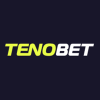Esports skin betting explained for UK readers in 2025: clear guidance on legality, risks, safety tools, and compliance essentials designed to support responsible players across all levels. Lets keep outcomes grounded in responsible sports betting UK, not marketing spin.
Skin Betting Sites
FAQs — quick answers you need
| Question | Short answer |
|---|---|
| Is skins wagering legal in Britain in 2025? | It is regulated when items hold cash-out value and a licensed operator offers the service. Unlicensed providers expose users to enforcement and loss. |
| What age applies? | Eighteen or over. Verification checks occur before deposits, withdrawals, or marketing access. Failure to prove age voids bets and can trigger account closure. |
| How do sites price items? | They use recent trade data, wear and pattern factors, plus platform-specific demand. Expect spreads, rounding, and buffer margins that reduce credited value. |
| Why did my credited value change? | Market movement, spreads, and fees. Volatility and liquidity slippage shift numbers between inventory submission, crediting, and settlement moments. |
| Can I get a refund after a failed trade? | If custody never transferred, request reversal with evidence. Keep timestamps, IDs, and screenshots. Third-party disputes depend on the venue’s documented policy. |
| What does “provably fair” mean? | Games publish cryptographic seeds and hashes so results can be independently verified after the round. Users compare disclosed seeds against outcomes. |
| Can items and cash mix on one slip? | Some platforms allow blended stakes; others separate balances. Check rules before confirming. Mixed staking can alter bonus eligibility and settlement sequencing. |
| How long do withdrawals take? | From minutes to days, depending on method, checks, and queue. Identity review or source-of-funds triggers extend timelines. |
| What happens if a match is postponed? | Books usually void or roll forward under published house rules. Read event-specific terms before staking to avoid surprises at settlement. |
| Are UK taxes due on winnings? | Recreational gambling winnings are not taxed. Professional activity or related income streams may differ; keep records and seek tailored advice if unsure. |
| UK tip (2025) | Photograph every deposit, trade, and cash-out confirmation. Evidence settles most disputes quickly. |
| Evidence to keep | Transaction IDs, wallet addresses, item IDs, chat transcripts, and settlement pages saved as PDFs. |
| When to escalate | After one failed response cycle, raise a formal complaint in writing. Preserve timelines and copies. |
Esports Skin Betting in the UK 2025

Many UK readers ask what is skin betting and why it has grown so rapidly. Skins are digital cosmetic items from popular titles such as Counter-Strike or Dota. They carry exchangeable value because players trade them through marketplaces, often tied to Steam Community Market trading limits and a seven day trade hold Steam mechanism. Operators transform these cosmetics into usable credit for games of chance or match wagers. The skin betting definition involves two distinct streams: house entertainment such as roulette styled mini-games, and structured esports markets where wagers use in-game items. Deposits equal transferring skins, withdrawals reverse the process by cashing out into items again. Value shifts daily because market demand drives prices. Understanding what is a skin in sports betting means recognising how digital scarcity fuels real world risk. If you’ve wondered what is a daily fantasy sports bet, it’s a separate format, yet the contrast helps explain how external value flows into gaming cultures.
Why skins have value in a game economy
Within the skin betting industry, cosmetic demand often surpasses simple aesthetics. Skins betting esports thrives because scarcity, float quality, and collector enthusiasm shape perceived worth. Market updates, rare drops, and liquidity shocks alter values. Awareness of community market price volatility and manipulation risks helps players approach trades responsibly. Item float value explained through wear tiers such as Factory New vs Battle-Scarred further increases complexity. Pattern index and rarity tiers or StatTrak price premium analysis add layers of speculation. Hype cycles built on esports betting predictions can nudge thin markets and trigger sharp repricing.
Core drivers of skin value
These points highlight the economic dynamics behind skins. Understanding them assists readers in assessing risk before engaging with digital markets.
- Cosmetic scarcity and rarity tiers
- Float wear levels influencing appeal
- Unique pattern index variations
- Collector demand driving premiums
- Community updates shifting supply
- Volatility created by market speculation
How esports match betting with skins works
Skin betting on matches functions through a structured process. Esports betting with skins typically begins by linking a personal inventory to a platform. Items are valued, converted into credits, and placed against a chosen contest. After the event, results settle using provably fair algorithm explained mechanics. Sites employ trading bot escrow for skins to safeguard transfers. Settlement returns equivalent value, with provably fair seed verification ensuring transparency. Wagering via this method mirrors cash staking but remains tied to digital objects. There’s no truly zero risk betting strategy here, only process and discipline.
Step-by-step process
This breakdown shows the journey of a skin from inventory to a settled wager. Each stage matters for clarity, fairness, and security. Ignore glossy sports betting tips ai predictions when you verify settlement; numbers beat noise.
- Connect personal gaming inventory
- Submit items for valuation
- Receive balance credited in site tokens
- Choose an esports contest
- Stake tokens on a selected outcome
- Settlement applies once results confirm
- Value returns through skins or cash routes
Law, Age Limits and Safety

In Britain, skin betting is treated as gambling when cosmetic items hold real-world value. Esports skin betting operators must follow gambling law, meaning players under 18 are excluded. UK gambling advertising standards ban misleading claims and demand strong warnings. Offshore providers often ignore these rules, leaving users exposed to greater risk. Regulators stress underage gambling prevention online, requiring age checks before play. Safety tools such as deposit caps and self-exclusion are central. The legal question is skin gambling legal in the UK has a clear answer: if items can be cashed out, full regulation applies in December 2025. Claims that arbitrage betting UK sidesteps scrutiny don’t hold up under licensed oversight.
UK rules and regulators — what betting law covers esports skins
Skin betting websites sit inside gambling law whenever in-game items can be traded for money. UKGC guidance on skins gambling makes clear that operators need a licence to offer such services. Loot boxes regulation UK remains contested, but once value leaves the game, oversight begins. Offshore licensing for skin casinos complicates enforcement, as foreign operators may not meet local standards. Valve policy on gambling websites also restricts developers, closing many loopholes used by earlier sites. Promotions must avoid best signup bonus sports betting-style exaggeration and stick to verifiable terms. Licensed platforms answer to the Gambling Commission, while unlicensed ones risk enforcement action and player losses without effective consumer protection in place.
Key UK frameworks
These frameworks show how regulators apply rules to skin markets. Each one highlights obligations operators face and the protections players should expect.
- UK Gambling Commission licensing requirements
- Consumer safeguards under the Gambling Act
- Loot boxes regulation UK debate and boundaries
- Advertising standards enforced by the ASA
- Offshore licensing for skin casinos and its limits
- Valve policy on gambling websites affecting access
KYC, age checks and third-party compliance you must know
Skin betting sites in the UK demand strict checks. Esports betting age verification blocks under-18 players at registration. KYC checks for esports gambling confirm ID, address, and sometimes video proof. Identity verification document checks can extend to income and funding sources. Tools such as GamStop self-exclusion explained give players control, while Monzo gambling block settings stop payments at bank level. To pass checks, documents must be valid and match account details. These measures protect accounts, cut fraud, and enforce safer gambling, ensuring only verified adults take part in skin markets in 2025. Age filters mirror those used by a sports betting app ios android, where automated gates block underage access.
Formats & Sites
The best skin betting sites divide into two types: casino-style platforms offering house games and bookmakers handling match wagers. Casinos lean on crash, roulette, coinflip, and jackpot draws. Book-style outlets value in-game items, convert them to credits, and settle against esports results. Deposits often include cryptocurrency deposits on skin sites, alongside item transfers. Some operators also trial crypto esports betting UK flows, though compliance remains the key test. Fees appear during conversion, shaving value before play. Fairness hinges on clear provably fair algorithm explained statements. Transparency problems arise where influencer promotions use undisclosed streamer affiliate code disclosure tactics. Understanding how each site operates matters more than branding promises, helping players recognise safe pathways in 2025.
House games: jackpots, coinflip, crash, roulette
A skin betting site often builds traffic through high-volatility games. Jackpots pool entries, rewarding one address with everything. Coinflip splits fifty-fifty, though hidden costs from item conversion reduce effective return. Crash rewards quick exits but punishes hesitation. Roulette mimics casino wheels, applying edge through payout ratios. Each vertical promotes provably fair seed verification, yet actual checks depend on user awareness. Case opening odds transparency remains weaker, with skewed outcomes reducing trust. Limits vary: some cap stake size, others limit frequency. RTP bands stretch between 92–98%, still lower once conversion spread is considered. Operators attract users with a skin betting bonus, masking true edge with promotions. The surface may resemble online betting casino games UK, yet the stake still rides on items and conversion spreads.
| Game | Mechanics | Variance | House Edge | Fairness Check |
|---|---|---|---|---|
| Jackpot | Pool entries, one winner | High | 3–5% | Provably fair seed verification |
| Coinflip | 50/50 heads or tails | Medium | 2–4% | Algorithmic audit |
| Crash | Multiplier climbs, bail before bust | Very High | 1–3% | Real-time hash reveal |
| Roulette | Wheel colours and numbers | Medium | 2–3% | Seed replay tool |
Don’t expect betting sites fast withdrawal behaviour; settlement can lag when inventories move through bots.
Match betting with skins on esports sites and mini-games
Match betting with cs2 skin betting sites and dota 2 skin betting sites follows traditional markets. Players stake in-game items converted into credits, backing match winner, handicaps, or totals. Mini-games often sit alongside, blending chance with structured wagers. Settlement rules mirror cash books, though value depends on conversion rates. ESIC match fixing investigations cover suspicious games, and line movements often flag integrity concerns. Offshore licensing for skin casinos complicates complaint routes, leaving players exposed. Knowing where integrity oversight applies is key for bettors looking beyond flashy interfaces in 2025. Live edges demand a measured in play betting strategy rather than impulse chasing.
Core markets & watchpoints
These are the primary betting areas and red flags. Each highlights how markets function and where caution may be necessary.
- Match winner — straightforward but vulnerable to fixing
- Handicap spreads — balance uneven match-ups
- Totals markets — cover rounds, maps, or kills
- Mini-games — lightweight distractions alongside core wagers
- Line movement — sudden shifts may signal manipulation
- Integrity oversight — ESIC investigations provide essential protection
Don’t sprint after screen prices like you’d try to find a bookies near me; online liquidity moves differently.
Marketplaces & Trading
Players in December 2025 use several pathways to shift in-game cosmetics into spendable value. Skin betting cs2 or skin betting dota 2 involves more than gameplay; it ties into marketplaces. The Steam Community Market trading limits keep activity inside a controlled system, yet liquidity is often thin. Peer-to-peer skin marketplace trading unlocks better rates but introduces higher fraud risk. Seven day trade hold Steam delays can block quick moves. Trading bot escrow for skins speeds transfers yet charges fees. Slippage is constant as item prices move with demand, so cash equivalents rarely match the notional value shown at deposit. Trend-tracking can feel like scanning f1 betting tips, but the signal often arrives late in thin books.
Trading routes and fees on third-party platforms
Third-party trading defines value conversion for small skin betting sites and dota2 skin betting sites. Steam’s market is official but restrictive, with long holds and capped balances. Peer-to-peer trades offer flexibility, though disputes are common, and chargeback risk with digital goods is high. Third-party skin cashout services move inventory into cash or crypto, usually with 10–20% fees. Crypto on-ramp compliance checks can extend settlement. Cashout services rely on escrow to protect users, but hold times vary. Each route balances speed, cost, and safety differently, forcing players to choose between liquidity and security when shifting digital items into usable money. Some users even pivot toward a crypto sports betting exchange after cashout, adding extra steps and checks.
| Route | Fees | Hold Times | Escrow | Dispute Options | Crypto Support |
|---|---|---|---|---|---|
| Steam Market | 15% | 7 days | No | Valve support | No |
| P2P Direct | 0–5% | Instant | No | User mediation | Limited |
| Third-Party Service | 10–20% | 1–3 days | Yes | Platform support | Yes |
| Crypto Rails | 5–12% | Minutes–hours | Yes | Blockchain dispute limited | Yes |
| Cashout Aggregator | 12–18% | 1–5 days | Yes | Platform team | Yes |
Cashout options to money and the risk of bans
Cash conversion routes remain varied for anyone using an esports skin betting website. Options include gift cards, P2P sales, crypto, or third-party services. Each path carries risk, particularly where Valve policy on gambling websites creates enforcement bans. Skin to cash withdrawal methods often trigger platform visibility, flagging suspicious movement. Consumer rights for digital items UK complicate chargeback claims since intangible assets lack standard refund protection. Crypto offers speed but demands KYC at many points. Gift cards avoid banks yet limit utility. P2P remains popular but dangerous without trust. Every method faces differing ban levels, costs, and settlement times. Small-bankroll readers used to lowest deposit betting sites often underestimate the drag from conversion fees.
| Method | KYC Needed | Timeline | Fees | Ban Risk | Notes |
|---|---|---|---|---|---|
| Steam Market | No | 7 days+ | 15% | Low | Funds locked to Steam Wallet |
| P2P Sale | No | Instant | 0–5% | High | Fraud and scams possible |
| Gift Cards | No | 1–2 days | 5–10% | Medium | Limited spend options |
| Third-Party Sale | Yes | 2–4 days | 10–20% | Medium | Escrow protects trades |
| Crypto Exchange | Yes | Minutes–hours | 5–12% | Medium | KYC checks required |
| Aggregator Service | Yes | 1–5 days | 12–18% | Medium | Mix of routes available |
Step-by-step Guide for Your First Wager
This esports betting guide keeps first steps small, methodical, and fully documented. Before staking, secure accounts with Steam Guard two-factor authentication and use parental controls for Steam gambling where needed. Responsible gambling tools for esports should be enabled early. Treat early sessions like a betting challenge UK with tiny stakes and strict review points. Begin by valuing inventory and testing minimal stakes, scaling slowly only after understanding settlement records.
Practical onboarding flow
Follow these steps to protect accounts, understand risks, and track performance before committing higher value stakes. Ask yourself what is a sports betting system trying to manage at each stage—volatility, limits, or timing.
- Secure accounts with strong passwords and two-factor login
- Enable parental and spending controls where relevant
- Value items using market references before depositing
- Register with documentation ready for verification
- Test low stakes to check platform function
- Review bet slips carefully before confirming
- Monitor settlement accuracy after each event
- Scale slowly only once confident with the process
Get skins: play, shop, or trade
Drops earned in play remain the cheapest path, though tied to randomness. Opening cases gives excitement yet often costs more than resale. Peer trades offer direct exchanges, but scams and high-risk inventories remain common. Third-party shops sell convenience yet charge higher fees and often impose trade holds. Dota 2 skin betting draws heavily on these items, yet cross-game item trading rules and Steam Community Market trading limits shape liquidity. Always verify float values and authenticity before committing. Hype around top android casino games UK reviews bonuses sometimes bleeds into skin shops; stay sceptical. Avoid accounts with unusual activity, since compromised inventories can disappear without recourse once traded away in 2025.
Choose a site: security, licensing, and support
Before joining cs skin betting sites, check how each platform handles player protection. Offshore licensing for skin casinos leaves gaps, while strong licences improve trust. Provably fair seed verification proves transparency in house games. Streamer affiliate code disclosure is also crucial, ensuring promotions are honest. Fairness reports and RTP disclosures should be public. Payment rails need strong encryption. Customer support response speed can reveal reliability. Ignore banners shouting mobile casino free bonuses UK when the fundamentals look weak. Reviewing these areas before depositing reduces exposure to weak operators.
Security & compliance checklist
Use this breakdown to test whether a provider meets minimum safety and fairness standards before committing any items or funds.
- Confirm licensing jurisdiction and regulator
- Review fairness reports and RTP disclosure
- Check provably fair seed verification tools
- Evaluate payment encryption and settlement timelines
- Monitor customer support response times
- Look for clear streamer affiliate code disclosure
- Verify responsible gambling resources are offered
Providers should also surface responsible sports betting tips UK that are practical, not preachy.
Place a first bet: stake sizing and limits
An esports betting guide for beginners should stress careful stake sizing. Convert item value into credits, then set personal spending limits before playing. Markets like match winners or handicaps are accessible starting points. Identity verification document checks may be required before settlement, so keep ID ready. Take bet slip screenshots to verify stakes placed. Tracking settlement results helps identify mistakes and sharpen judgement. Chatter that reads like snooker betting tips won’t replace a clean logbook. Monzo gambling block settings provide an extra safeguard against overspending. Building this discipline early in 2025 ensures longer, safer participation and prevents overexposure to unnecessary risk across esports wagering platforms.
CS2 Betting Basics
The CS2 calendar in 2025 features packed seasons, from Majors to franchised leagues. For punters interested in cs2 skin betting, liquidity and integrity matter as much as form. Top-tier events attract bookmakers with deeper markets, while smaller competitions offer thinner lines and volatile moves. ESIC match fixing investigations highlight risks at lower levels. Market odds swing with roster changes, player health, and the shifting map pool. Community market price volatility also feeds into how item stakes fluctuate once valued for bets. Major events consistently provide more stable pricing and higher wagering volume compared to minor qualifiers. True live betting esports counter strike 2 swings often track map pool shifts and role swaps.
| Event/League | Season Window | Format | Typical Markets | Liquidity Cues |
|---|---|---|---|---|
| CS2 Major | Spring/Autumn | Swiss + Playoffs | Winner, Maps, Totals | Highest volume |
| BLAST Premier | Year-round | Groups + Finals | Outrights, Handicaps | High liquidity |
| ESL Pro League | Twice yearly | Groups + Playoffs | Match odds, Totals | Strong liquidity |
| IEM Events | Quarterly | Groups + Knockout | Winner, Props | Moderate volume |
| Regional Qualifiers | Pre-Majors | BO1/BO3 | Winner, Totals | Low liquidity |
| Online Cups | Ongoing | Single Elimination | Winner only | Minimal liquidity |
Converting skin value to money odds and limits
Effective staking in cs skin betting means treating items as currency. A CS2 skin value calculator helps translate inventory into usable bankroll, but Steam Community Market trading limits and site fees distort totals. Conversions must include slippage, since resale rarely matches headline price. Respecting limit tiers is vital: small wagers may clear quickly, larger ones might be capped or delayed. Thinking in bands, not raw items, keeps risk in check and avoids overexposure to variance. A framework ensures every stake sits within bankroll discipline, with clear awareness of liquidity constraints and potential market swings.
Quick conversion & staking checkpoints
Use these checkpoints to align skin values with practical betting stakes. Each point ensures discipline and helps adapt item worth to site realities.
- Check market value with a CS2 skin value calculator
- Deduct site fees and likely slippage
- Assess stake versus account limit tiers
- Allocate bet size by bankroll percentage
- Adjust exposure based on volatility of chosen market
Risks, Scams and Protections

Skins wagering brings real hazards. For e sports skin betting, map risks clearly: account takeover, sham escrow, distorted pricing, match manipulation, and offshore blind spots. Build layers before staking. Use unique passwords, hardware keys, and platform two-factor. Avoid unknown intermediaries and unverified wallets. Treat displayed odds as marketing until independently checked. Log deposits, withdrawals, and settlements with screenshots. Verify dispute routes and operator ownership. Lock devices at home and enable family protections if younger users share hardware. Keep strict limits, short sessions, and unemotional reviews. Good records settle arguments, reduce losses, and preserve options when something breaks in December 2025.
Third-party scam patterns and red flags
Fraud follows value. In counter strike skin betting, expect engineered tricks designed to strip inventories and balances. Typical ploys include fake escrow bots, cloned trader identities, staged giveaways, manipulated crash feeds, and withdrawals locked behind “one more deposit”. Kickback schemes route players to opaque venues. Reduce damage by verifying domains, running micro test transactions, and demanding timestamped receipts. Keep communications inside the platform to preserve evidence, and escalate through payment providers or regulators if stonewalled.
Recognise-and-respond red flags checklist
Use these cues to spot trouble early and act fast. Confirm every step, keep proof, and stop immediately when behaviour deviates from published rules.
- Unsolicited “escrow” pages asking for login credentials
- Impersonation using look-alike names, avatars, or vanity URLs
- Giveaways requiring prior deposits or “verification” payments
- Crash feeds that replay identical sequences or hide seeds
- Withdrawal conditions that change after a win
- Influencer codes without clear disclosure of commissions
- Owners hidden behind PO boxes or shell entities
- No published dispute path, or support that refuses written confirmation
Budgeting, deposit limits, and reality checks
An online esports betting guide should start with money rules. Fix a session cap, then daily and weekly ceilings. Pick a loss-stop that ends play automatically. Schedule cool-downs after intense runs. Track minutes and spend with independent apps, not just the site’s dashboard. Bank blocks and nationwide self-exclusion tools add backstops. Review results weekly, not mid-tilt, and cut limits when volatility spikes. Keep funds outside gambling wallets between sessions.
Practical budgeting tools & limit settings
Enable these safeguards before your first stake. Each control reduces impulse risk and makes stopping simple when emotions run hot.
- Time caps — auto-logout after a fixed session length
- Daily deposit ceiling — blocks transfers beyond a set amount
- Weekly aggregate limit — keeps multi-site spend contained
- Loss-stop — locks accounts when a predefined figure is hit
- Nationwide self-exclusion — bars access across licensed operators
- Bank card gambling blocks — decline merchant codes linked to betting
Volatility, liquidity, and risk management
House games swing hard; match markets swing smarter. Rust skin betting adds friction from conversion spreads and thin books. Diversify across leagues, formats, and prices. Hedge exposure with opposing outcomes, or take partial cashouts to bank progress. Keep a trading log that records price, spread, rationale, and result; patterns emerge only with data. When liquidity thins, reduce size, widen limits, or walk away. Discipline beats edge claims you cannot verify.
The integrity of our member events is absolutely key to ESIC.
Ian Smith, Commissioner, Esports Integrity Commission
Loot boxes are illegal gambling where skins can be traded on a secondary market.
Leon Y. Xiao, Assistant Professor, Video Game Law
More information related:
- https://www.gamblingcommission.gov.uk/licensees-and-businesses/guide/page/digital-and-virtual-currencies – UK Gambling Commission — Virtual currencies, eSports and social gaming
- https://esic.gg/codes/anti-corruption-code/ – Esports Integrity Commission — Anti-Corruption Code and integrity framework
- https://store.steampowered.com/subscriber_agreement/ – Valve — Steam Subscriber Agreement (trading, market, and account obligations)
- https://www.gambleaware.org/media/3hijjkaq/skins-betting-and-blockchain-003.pdf – GambleAware — Skins betting and blockchain: risks, mechanics, and consumer impacts (research report, PDF)
- https://en.wikipedia.org/wiki/Skin_gambling – Wikipedia — Skin gambling (definitions, history, notable cases)
- https://www.reddit.com/r/GlobalOffensiveTrade/wiki/index/ – Reddit — r/GlobalOffensiveTrade Wiki: safety, verification, and trading practices
Is esports skin betting legal in the UK in 2025?
Yes, when the operator holds a valid gambling licence and the skins you stake or trade can be turned back into money. If you use an unlicensed platform, you’re gambling without protection – balances can disappear, disputes are harder to fight, and regulators may step in against the provider, not always in time for you.
What age limit applies for esports betting with skins in Britain?
You must be 18 or older to use regulated skin-based products. Sites run age checks before letting you load funds, withdraw, or receive targeted promos. If you can’t verify when asked, bets can be cancelled, balances frozen, and the account shut down, so it’s worth having documents ready before you really get involved.
How do skins betting esports platforms decide what my items are worth?
They usually combine recent market trades, float or wear level, visual pattern, and current demand on their own site. On top of that, they build in spreads, rounding rules, and safety margins. That’s why the figure you see credited to your account often sits noticeably below what you’d hoped to receive from the trade.
Why did the value credited by the esports skin platform change after my trade?
Because prices move. Between sending inventory, confirming the swap, and final settlement, markets can shift, spreads widen, or extra fees apply. Liquidity slippage also bites when demand thins. So you might see one estimate at submission, another at crediting, and a slightly different final figure when everything finishes updating in the system.
Can I get my skins or balance back after a failed esports trade?
If the item never actually left your custody, you’ve got a stronger case. Contact support quickly, share timestamps, trade IDs, and screenshots. Where a third-party service sits in the middle, outcomes depend on that venue’s published rules. I’d always read those terms beforehand so you’re not scrambling when something glitches at the worst moment.
What does “provably fair” mean on an esports skin platform?
It means the game publishes cryptographic hashes and seeds so you can check that nobody tampered with results. After the round ends, the operator reveals the seed, and you compare it with the earlier hash and final outcome. If everything lines up, you know the spin or roll followed the rules, not hidden tweaks.
Can I place one bet using both skins and cash on the same esports slip?
Some operators let you combine balances so a single stake draws partly from item credits and partly from regular funds. Others keep each pool separate. Always read staking rules first, because blended bets can change how bonuses work, how settlements queue, and whether certain promotions even count toward their stated wagering requirements.
How long do withdrawals from an esports skin platform usually take?
Anything from a few minutes to several days. Speed depends on the payment channel, internal checks, workload, and sometimes extra reviews. If compliance asks for identity or source-of-funds documents, expect additional delay. When you’re planning to cash out, factor in that waiting period instead of assuming instant access to your winnings.
What happens to my esports skin bet if a match gets postponed?
Most bookmakers either void the selection or carry it forward under the house rules they publish in advance. Some tie decisions to how long the delay lasts. I’d always check the event-specific settlement section before confirming any slip, so you’re not surprised when the grading finally appears on your account summary.
Do I owe UK tax on esports skin betting winnings?
For casual players, gambling returns, including those from skin-based activity, aren’t normally taxed in Britain. Things get more complex if betting starts to look like a profession or links to other income streams. Keep solid records, and if you’re unsure where you stand, speak with a qualified adviser rather than guessing.
What is skin betting?
Skin betting uses cosmetic game items as staking units on casino-style games or esports outcomes. Instead of chips, you transfer digital inventory, receive site credits based on valuation, then risk those credits on outcomes. Wins return value through fresh items, wallet balance, or both.
What is a skin in sports betting?
A skin in this setting is a tradable cosmetic from titles like Counter-Strike or Dota that people treat as a value carrier. Platforms convert these collectibles into accounting units for wagers, then later back into virtual gear, gift cards, currency, or similar.
How does skins betting work?
You connect a game account, send selected cosmetics to an automated bot, receive calculated credits, choose a market, and confirm stakes. After settlement, the platform adjusts your balance and lets you convert any remaining value back into new items, crypto, vouchers, or other payout routes.
What are skins in esports?
Within esports, skins are visually distinctive weapon, character, or equipment appearances dropped, crafted, or purchased inside games. Communities attach value based on rarity, aesthetics, and collectability, which is why some players later use them as informal currency for trading, staking, or bartering.
How do skins payouts work?
Payouts follow the site’s conversion tables. When a wager succeeds, your balance increases in credits first. Afterwards, you pick withdrawal options: new cosmetics, marketplace transfers, crypto, gift cards, or occasionally fiat rails. Each route has fees, limits, and potential delays, so checking rules beforehand really matters.
What is the highest skin ever won?
Individual reported jackpots have included ultra-rare patterns for iconic rifles or knives worth hundreds of thousands in notional value. Exact records are fuzzy because many deals happen privately, yet the principle holds: extreme scarcity plus hype can push single inventory pieces into luxury territory.
What is the most expensive game skin ever sold?
Public sales have reached eye-watering figures, with certain legendary Counter-Strike rifle finishes or knife patterns reportedly changing hands for six-figure, sometimes seven-figure, sums. Verification is tricky, yet reputable collectors, brokers, and auction intermediaries frequently reference headline-grabbing deals that rival physical art prices.
What’s the most expensive skin in League?
League of Legends cosmetics don’t usually reach Counter-Strike levels because they’re account-bound rather than freely tradable. Rarest bundles, limited legacy releases, and promotional exclusives can still command hefty secondary valuations via entire accounts, yet that kind of resale often breaches platform terms and risks bans.
Can you trade CS2 skins for real money?
Direct cashout through the official marketplace isn’t offered; balances stay locked to that ecosystem. However, users frequently route items through peer-to-peer deals, third-party markets, or cashout services. Those channels introduce counterparty risk, fees, and possible account sanctions when rules on gambling or trading get broken.
Is it illegal to sell CS skins?
Selling cosmetic items sits in a grey area shaped by platform agreements, consumer law, and gambling regulation. Many jurisdictions don’t prohibit private trades themselves, yet publishers may forbid commercialisation, and authorities intervene when sales become money-laundering vectors, underage gambling conduits, or unlicensed betting business activity.
Can you profit from CS2 skins?
Some dedicated traders do build profit through arbitrage, speculation, and careful risk controls, but many others lose value to fees, volatility, and scams. Treat any speculative activity as high risk, cap exposure, document every transfer, and remember that entertainment, not guaranteed income, should drive decisions here.



























































Thanks for sharing. I read many of your blog posts, cool, your blog is very good.